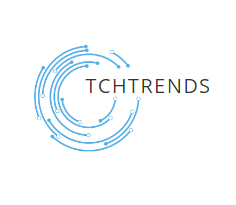As event planning evolves, integrating digital visualization tools is becoming increasingly crucial. These innovative tools alter the landscape, providing a more cohesive, efficient, and flexible planning process. By incorporating an elaborate, virtual preview of event layouts, planners can communicate effectively with clients and ensure an error-free execution. Traditional planning boundaries no longer constrain the online event planner but can revel in the freedom and precision digital visualization affords. It is where the imagination meets practicality, with technology as the enabler. Digital visualization represents a synthesis of technology and creative design, allowing an online event planner to manifest virtual models of event concepts. By leveraging sophisticated software, designers can draft comprehensive representations down to the finest detail—from lighting arrangements to the texture of table linens. This capability not only impresses clients but also aids in making informed decisions about space utilization and decor selections. Employing such tools elevates the planning phase from simple sketches and descriptions to immersive, tangible experiences that closely mimic the envisioned event. Selecting appropriate digital visualization software is the starting point for constructing a comprehensive event layout. Several factors, including feature compatibility, ease of use, and range, may be considered by planners. Following software selection, creating a digital layout generally progresses from establishing the venue’s boundaries to adding intricate design elements like stages or floral installations. This stage often throws up logistical difficulties, like reconciling the client’s flamboyant ideas with physical space limitations. Thanks to these tools, these challenges are navigated deftly, allowing for numerous “virtual” trials without the expense of physical mock-ups. For clients, the power of digital visualization lies in its ability to provide a clear picture of the proposed event’s look and feel. It’s a process that turns abstract thoughts into something palpable, greatly enhancing understanding. It grants clients the power to provide on-the-spot feedback, leading to a more collaborative and fulfilling planning journey. For those who cannot be physically present, specialized software may offer remote access to virtual tours, making participation possible from any corner of the globe. This interaction streamlines decision-making and cultivates a more profound sense of involvement among clients who can practically “walk” through their future events. Efficient vendor collaboration is pivotal to the success of any event. Sharing digital blueprints with caterers, audio-visual teams, and decorators simplifies communication and strengthens the partnership. With access to a detailed layout, vendors are better prepared and can plan their contributions more effectively, minimizing the likelihood of day-of-event surprises. These visual references are a universal language for all parties, ensuring that each puzzle piece fits perfectly. The added value of high-quality digital representations extends beyond the planning phase, acting as powerful marketing assets highlighting an event planner’s capability and vision. Modern event attendees expect to engage with events long before they arrive. Tools that provide virtual navigation of the venue or apps that allow for digital networking are benchmarks of next-generation event experiences. Such interactivity is not limited to the digital realm; the data collected from these interactions can be a goldmine for feedback, helping to refine future events. Interactive digital elements can also bridge the physical event and its online footprint, integrating social media posts, live streams, and other digital content to create a holistic and immersive experience for those attending virtually or in person. Success stories are ample in the event planning industry, illustrating the transformative power of digital visualization. One notable example includes an international tech convention that utilized AR and VR to give guests an immersive understanding of new products. Similarly, at a grand charity gala, a detailed 3D layout allowed the event team to maximize space efficiently, ensuring the comfort of high-profile attendees while optimizing the event flow for fundraising activities. These examples highlight the technological triumphs and the practical successes achieved when creativity meets digital innovation. Digital visualization in event planning is poised for further innovation and integration. VR and AR are gaining traction, offering experiences beyond physical venues’ confines. For example, VR can simulate environments for large-scale events, allowing planners and clients to conduct virtual site visits and adjust in real-time. Furthermore, AR applications can overlay digital information onto the physical world, enriching the attendee’s experience. While VR and AR are currently on the fringe of mainstream event planning, their potential to revolutionize how events are conceived, planned, and enjoyed is substantial. The question for the event planning industry is not whether digital visualization will become the standard but how swiftly professionals will adapt to these shifting paradigms. As the demand for such competencies escalates, planners must keep abreast of these changes or risk obsolescence. Resources for learning these technologies are abundant, enabling planners to acquire and refine these critical skills. Measuring the return on investment for these innovations isn’t just a matter of fiscal consideration; it’s about client satisfaction, event success, and carving a niche in an increasingly competitive market.Understanding the Role of Digital Visualization in Event Planning
The Process of Creating a Digital Event Layout
How Digital Visualization Enhances Client Experience
Collaborating with Vendors Using Digital Blueprints
Incorporating Guest Interaction with Digital Tools
Case Studies: Success Stories of Digital Visualization in Events
Trends in Digital Event Planning: What’s Next?
Adopting Digital Visualization as a Standard in Event Planning

